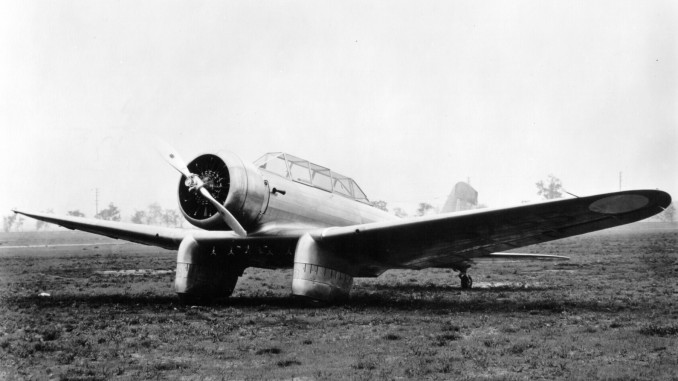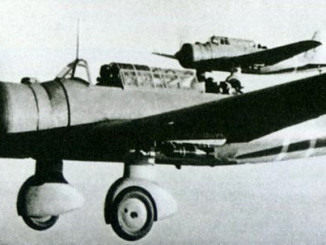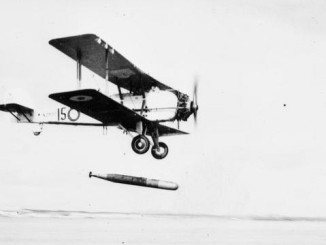
Originally, the Northrop Gamma 2E was a light cargo aircraft designed to carry airmail across North America for Trans-World Airlines. In civilian guises the Gamma also acted as a flying laboratory, and set numerous records including the New York-Los Angeles run under the control of Howard Hughes. A modified Gamma also pioneered air routes over Antarctica in 1935/6.
Military versions of the Gamma 2C proved less successful, as the US Army Air Corps declined to purchase large numbers of the craft. Instead, Northrop turned to the export market with the improved Gamma 2E, which could carry a heavier bomb load than the 2C. 50 were ultimately sold to China in time to fly during the 2nd Sino-Japanese War.
Gamma 2Es saw extensive use during the first months of the conflict. It was Gammas which carried out the failed attacks on the Japanese cruiser Izumo in the Huangpu River, as well as futile attempts to hold back the Japanese assault on Shanghai. As the Japanese began to assert control of the city, Gammas were forced to resort to ineffectual night attacks. In southern China, Gammas failed to damage the blockading ships of the Japanese Navy before being destroyed during bombing raids by carrier aircraft.
| Northrop Gamma 2E | |
| Role | Light bomber |
| Crew | 2: Pilot, bombardier |
| Powerplant | Wright Cyclone R-1820 (710hp) |
| Speed (cruise/max) | 223mph / 204mph |
| Ceiling | 23,400ft |
| Range | 1,970 miles |
| Armament | |
| Ordnance | 1,600lb bombs |
| Dimensions (L/W/H) | 31ft 2in / 47ft 10in / 9ft 0in |
| Weight (empty/max) | 4,119lb / 7,350lb |




Leave a Reply